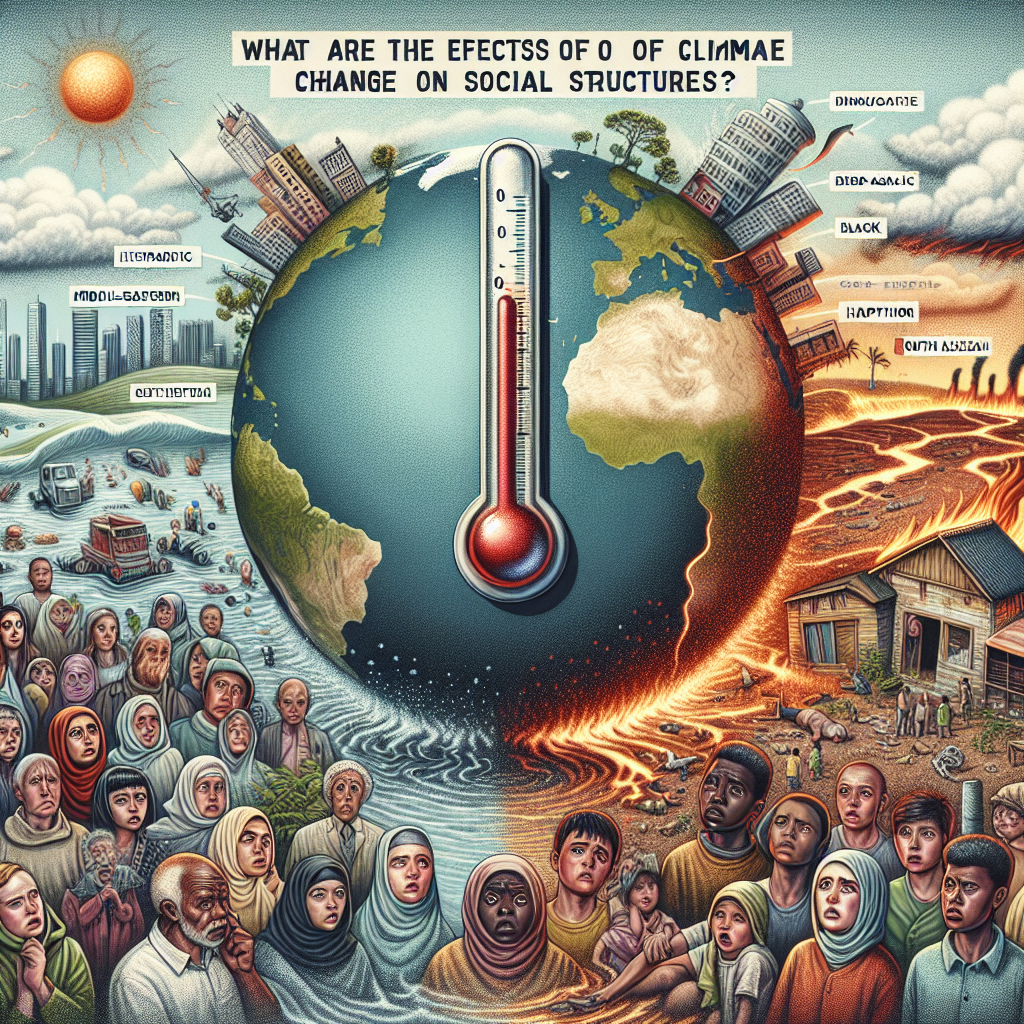Climate change is arguably one of the biggest challenges facing humanity today. The effects of climate change are far-reaching, impacting not only the environment but also social structures around the world. From displacement of communities to resource scarcity, climate change is reshaping the way societies function. In this article, we will explore the various effects of climate change on social structures and how individuals, communities, and governments can work together to mitigate its impacts.
One of the most visible effects of climate change on social structures is the displacement of communities. Rising sea levels, extreme weather events, and droughts are forcing people to leave their homes in search of safer places to live. This displacement can lead to overcrowding in cities, strain on resources, and increased social tensions. In some cases, entire communities are being forced to relocate, leading to loss of culture and identity.
Resource scarcity is another major impact of climate change on social structures. As temperatures rise and weather patterns become more unpredictable, agricultural production is affected, leading to food shortages and higher prices. This can result in increased competition for resources, social unrest, and conflict. In some regions, access to clean water is becoming a major concern, leading to water scarcity and health problems.
In addition to displacement and resource scarcity, climate change is also exacerbating existing social inequalities. Vulnerable populations, such as low-income communities and indigenous peoples, are disproportionately affected by the impacts of climate change. They often lack the resources and infrastructure to adapt to changing conditions, making them more susceptible to the negative effects of climate change.
Furthermore, climate change is also impacting social structures by influencing migration patterns. As temperatures rise and extreme weather events become more frequent, people are increasingly moving to different regions in search of better living conditions. This can lead to overcrowding in certain areas, putting strain on resources and infrastructure.
Overall, the effects of climate change on social structures are profound and far-reaching. It is crucial for individuals, communities, and governments to work together to address these impacts and build more resilient societies. By taking action to reduce greenhouse gas emissions, adapt to changing conditions, and support vulnerable populations, we can mitigate the effects of climate change on social structures.
FAQs
Q: How can individuals contribute to mitigating the effects of climate change on social structures?
A: Individuals can contribute to mitigating the effects of climate change by reducing their carbon footprint, supporting sustainable practices, and advocating for climate action. This can include using public transportation, reducing energy consumption, and supporting renewable energy sources.
Q: What role can communities play in building resilience to climate change?
A: Communities can play a crucial role in building resilience to climate change by working together to develop adaptation strategies, sharing resources, and supporting vulnerable populations. This can include implementing sustainable land use practices, building climate-resilient infrastructure, and promoting community-based initiatives.
Q: How can governments address the social impacts of climate change?
A: Governments can address the social impacts of climate change by implementing policies and programs that support vulnerable populations, invest in climate-resilient infrastructure, and promote sustainable development practices. This can include providing financial assistance to affected communities, developing early warning systems for extreme weather events, and enforcing regulations to reduce greenhouse gas emissions.
